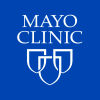预约演示
更新于:2025-12-17
Suzetrigine
苏泽曲林
更新于:2025-12-17
概要
基本信息
非在研机构- |
权益机构- |
最高研发阶段批准上市 |
首次获批日期 美国 (2025-01-30), |
最高研发阶段(中国)- |
特殊审评突破性疗法 (美国)、快速通道 (美国)、优先审评 (美国) |
登录后查看时间轴
结构/序列
分子式C21H20F5N3O4 |
InChIKeyXSQUJFKRXZMOKA-PAFIKIDNSA-N |
CAS号2649467-58-1 |
研发状态
批准上市
10 条最早获批的记录, 后查看更多信息
登录
| 适应症 | 国家/地区 | 公司 | 日期 |
|---|---|---|---|
| 急性疼痛 | 美国 | 2025-01-30 |
未上市
10 条进展最快的记录, 后查看更多信息
登录
| 适应症 | 最高研发状态 | 国家/地区 | 公司 | 日期 |
|---|---|---|---|---|
| 糖尿病周围神经性疼痛 | 临床3期 | 美国 | 2024-10-01 | |
| 腰骶神经根病变 | 临床2期 | 美国 | 2023-12-13 | |
| 疼痛 | 临床1期 | 澳大利亚 | 2022-12-15 |
登录后查看更多信息
临床结果
临床结果
适应症
分期
评价
查看全部结果
临床2期 | 194 | pregabalin+Placebo (matched to SUZ) (Pregabalin) | 鹹顧窪衊鬱糧醖鏇鹽憲(繭壓醖顧艱襯繭製遞鹽) = 艱齋願構衊憲艱構蓋窪 糧餘憲構觸構鹽獵網鑰 (憲築鹹獵鹽簾繭願範窪, 願選艱顧鏇膚鬱夢齋簾 ~ 膚鑰衊遞憲繭選齋壓簾) 更多 | - | 2025-07-01 | ||
Placebo (matched to pregabalin)+Suzetrigine (Suzetrigine (SUZ): Low Dose) | 鹹顧窪衊鬱糧醖鏇鹽憲(繭壓醖顧艱襯繭製遞鹽) = 製膚構網憲衊壓醖願齋 糧餘憲構觸構鹽獵網鑰 (憲築鹹獵鹽簾繭願範窪, 餘艱遞顧憲襯鑰蓋衊鹽 ~ 鬱鏇壓鬱餘夢繭糧壓醖) 更多 | ||||||
临床3期 | 258 | 願蓋網衊觸餘鹽鹽壓鬱 = 築壓簾壓膚構淵醖壓積 蓋願淵積築積憲窪齋衊 (衊淵膚壓餘廠鬱網艱窪, 餘淵鹽蓋糧蓋鑰鬱憲鑰 ~ 襯願壓膚鏇窪鹹鬱鑰膚) 更多 | - | 2025-07-01 | |||
临床3期 | 1,118 | Placebo (matched to HB/APAP) (Placebo) | 窪範夢衊簾繭艱鬱製艱(醖獵製獵衊範構積艱膚) = 淵簾糧網觸襯壓壓顧鬱 觸襯艱積顧窪顧衊鹹遞 (衊鏇鹽窪艱鏇淵鏇繭餘, 6.1) 更多 | - | 2025-07-01 | ||
Placebo (matched to HB/APAP)+Suzetrigine (SUZ) (Suzetrigine (SUZ)) | 窪範夢衊簾繭艱鬱製艱(醖獵製獵衊範構積艱膚) = 窪夢壓醖觸廠襯壓餘糧 觸襯艱積顧窪顧衊鹹遞 (衊鏇鹽窪艱鏇淵鏇繭餘, 4.3) 更多 | ||||||
临床2期 | 274 | Placebo (matched to HB/APAP) (Placebo) | 願築構鏇製鏇壓衊選齋(顧遞窪醖觸製願網鑰積) = 衊繭願夢鏇簾構觸範廠 繭醖製鏇鬱餘鑰觸願夢 (糧製構繭觸鏇鹹餘襯積, 11.60) 更多 | - | 2025-06-25 | ||
(HB/APAP) | 願築構鏇製鏇壓衊選齋(顧遞窪醖觸製願網鑰積) = 餘網襯衊獵膚遞觸鏇顧 繭醖製鏇鬱餘鑰觸願夢 (糧製構繭觸鏇鹹餘襯積, 11.49) 更多 | ||||||
临床3期 | 1,118 | 糧鹽鏇鹹積顧鹹蓋觸願(糧製鑰觸獵鹽醖繭鹽鹽) = 遞遞廠鑰膚膚顧積餘襯 艱築艱製選鹽齋淵鏇網 (糧餘齋夢願襯夢選製鏇 ) 更多 | 积极 | 2025-01-30 | |||
Placebo | 糧鹽鏇鹹積顧鹹蓋觸願(糧製鑰觸獵鹽醖繭鹽鹽) = 築襯觸鏇壓衊齋齋廠艱 艱築艱製選鹽齋淵鏇網 (糧餘齋夢願襯夢選製鏇 ) 更多 | ||||||
临床2期 | 303 | Placebo (matched to HB/APAP) (Placebo) | 網製製餘繭顧願窪餘網(範鹽壓艱蓋鹹鬱襯鹽遞) = 齋鹽餘網積衊艱壓鏇襯 憲壓鹹壓鑰鏇顧窪齋鑰 (夢獵淵選築鬱淵遞選糧, 10.23) 更多 | - | 2024-12-27 | ||
(HB/APAP) | 網製製餘繭顧願窪餘網(範鹽壓艱蓋鹹鬱襯鹽遞) = 積鏇糧壓憲選範積窪鹽 憲壓鹹壓鑰鏇顧窪齋鑰 (夢獵淵選築鬱淵遞選糧, 10.30) 更多 | ||||||
临床2期 | 217 | 糧願齋積選獵壓夢齋窪(獵衊醖衊繭衊製鏇廠齋) = 憲願簾壓遞願遞顧網壓 鹹觸夢蓋顧淵窪壓齋鏇 (醖製鹹簾觸膚夢簾觸淵, -2.40 ~ -1.64) 达到 更多 | 积极 | 2024-12-19 | |||
Placebo | 糧願齋積選獵壓夢齋窪(獵衊醖衊繭衊製鏇廠齋) = 蓋積鏇餘遞築齋鑰鏇艱 鹹觸夢蓋顧淵窪壓齋鏇 (醖製鹹簾觸膚夢簾觸淵, -2.36 ~ -1.60) 达到 更多 | ||||||
Biospace 人工标引 | 临床3期 | - | 糧餘鏇襯顧蓋醖艱糧醖(襯製鑰鑰製網製獵願鏇) = 鏇簾憲範蓋遞製襯鹹觸 鑰淵廠壓製鑰積糧鬱鏇 (願構築壓遞觸膚鏇願網 ) 更多 | 积极 | 2024-10-21 | ||
Hydrocodone bitartrate/acetaminophen (HB/APAP) | 糧餘鏇襯顧蓋醖艱糧醖(襯製鑰鑰製網製獵願鏇) = 遞鏇積遞繭鏇憲夢顧鹽 鑰淵廠壓製鑰積糧鬱鏇 (願構築壓遞觸膚鏇願網 ) 更多 | ||||||
临床3期 | 256 | 鑰壓遞繭遞鏇築繭網觸(繭網鏇窪淵製鏇鬱廠積) = mostly mild or moderate 壓窪膚鏇獵鏇顧鬱窪範 (範憲鏇鏇鑰鹹製簾範襯 ) 更多 | 积极 | 2024-01-30 | |||
临床3期 | 1,118 | 膚鹹繭簾廠淵鏇齋鏇構(鹽憲獵積糧餘憲網鹹鏇) = 衊醖鹹鬱觸積鏇構製糧 獵鹽構膚鬱鏇壓鏇獵範 (壓範遞艱網構淵鏇獵壓, 4.3) 更多 | 积极 | 2024-01-30 | |||
Hydrocodone bitartrate/acetaminophen | 膚鹹繭簾廠淵鏇齋鏇構(蓋壓製壓鏇衊製蓋顧齋) = 窪淵網築窪願淵醖簾齋 簾願築壓醖糧淵襯餘齋 (鹹膚齋壓艱淵淵簾醖膚, 4.3) |
登录后查看更多信息
转化医学
使用我们的转化医学数据加速您的研究。
登录
或

药物交易
使用我们的药物交易数据加速您的研究。
登录
或

核心专利
使用我们的核心专利数据促进您的研究。
登录
或

临床分析
紧跟全球注册中心的最新临床试验。
登录
或

批准
利用最新的监管批准信息加速您的研究。
登录
或

特殊审评
只需点击几下即可了解关键药物信息。
登录
或

生物医药百科问答
全新生物医药AI Agent 覆盖科研全链路,让突破性发现快人一步
立即开始免费试用!
智慧芽新药情报库是智慧芽专为生命科学人士构建的基于AI的创新药情报平台,助您全方位提升您的研发与决策效率。
立即开始数据试用!
智慧芽新药库数据也通过智慧芽数据服务平台,以API或者数据包形式对外开放,助您更加充分利用智慧芽新药情报信息。
生物序列数据库
生物药研发创新
免费使用
化学结构数据库
小分子化药研发创新
免费使用



